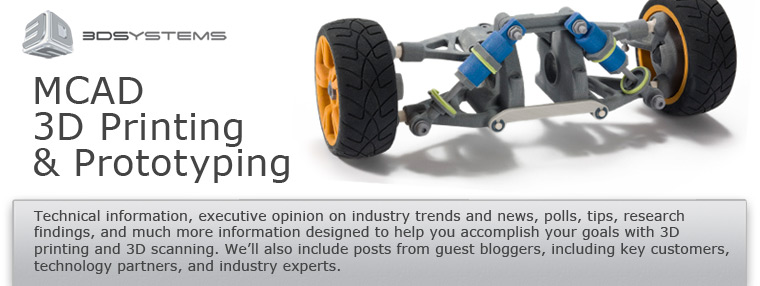I use 3D printed parts for many different and specific purposes in my job developing new products. I might print a part very early in the design to better visualize it before going back to CAD for refinements. I might create a mold for casting rubber-like prototype parts. I might print several scale models of printer concepts in order to select the industrial design direction for the next new printer. Or, it might be for any number of other purposes.
When I step back and think about it they all have one thing in common. They all improve the way something is communicated. An example I often use to describe this is when a part needs to be revised. For example, if it is discovered that an injection molded part needs a stiffening rib, a hole moved or a new boss added, I can print the original part and the revised part, both with annotations, arrows and color showing the specific changes. These parts can be sent along with the 3D database to the mold maker for review. The same information can be communicated by sending a 2D engineering drawing or the 3D database alone. But, having the actual revised part in hand has proven to be extremely valuable. The 3D database represents what the part will look like but the 3D printed part is the actual part and can communicate the changes much more clearly.
Our industrial design efforts have also benefited by improved communication. If industrial design is part of your development process you already know that the final product rarely looks like those glossy renderings that are typically used during presentations. The renderings look real but they leave a lot to the imagination. By 3D printing scale models of the design options, we can better visualize the subtleties of the design. The curves, gaps between panels, relative scale of features and other details become clear. Before committing to a direction for any industrial design effort, we always print a scale model. The same holds true for any user interface point. Communicating something as simple as the size or shape of a knob or button is significantly improved with 3D printing.
So, whether a 3D printed part is used for functional testing, ergonomic review, industrial design selection, or some other purpose, the underlying benefit is to improve communication. My examples only scratch the surface of ways that communication is better with 3D printing.
As always, I’m curious to hear about your experience with communication. Are there times when you thought the communication was clear but turned out to not be? Have you selected a design from a photo glossy rendering that turned out to look completely different? Do you think 3D printing might have changed the final result?
http://www.zcorp.com/
skip to main |
skip to sidebar

Subscribe to:
Post Comments (Atom)
Search This Blog
Scott Harmon

About Me
I am responsible for leading 3D Systems content creation and capture activities and, in partnership with business and functional leaders, developing new opportunities for the company. I have held a variety of leadership positions in marketing and business development and most recently ran a $150MM division of Church & Dwight, a leading consumer goods company. Prior to receiving my M.B.A from Harvard Business School, I was an Explosive Ordnance Disposal company commander for the U.S. Army. I graduated from the United States Military Academy at West Point with a B.S. in Electrical Engineering.







Thanks...
ReplyDelete3d printed products
Thanks......
ReplyDelete3d prototyping